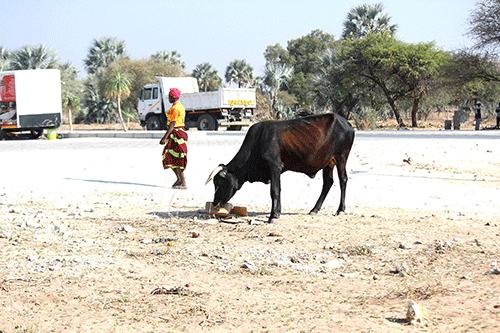An increase in the prime lending rate at commercial banks has direct implications for the debt-servicing cost of domestic households.
Since it is now hard for many to survive with no debt but cannot afford rates at banking institutions, and many are now turning to micro-lenders for survival.
According to the financial stability report for 2022 released by the Bank of Namibia (BoN) and the Namibia Financial Institutions Supervisory Authority (Namfisa), annual growth in household debt dropped to 3.3% at the end of 2023.
The growth reduction from 4.7% in 2022 to 3% in 2023 was mainly due to a lower uptake of credit from banking institutions by individuals.
Notably, the institutions at the launch of this joint report stated that individuals borrowed mainly from non-banking financial institutions during 2023, particularly microlenders as it registered a growth rate of 6.1% in 2023 compared with a contraction of 7.8% in 2022.
“Considering the banks’ evolving credit standards, individuals are increasingly turning to alternative lending sources, such as microlenders to meet their financing needs. The increase in borrowing from microlenders, who are often associated with higher costs compared to banks, may be a sign of strain on household cash flows and no further scope for banking sector credit,” reads the report.
It added that this decision by households does not bode well for the domestic economy’s financial stability, by way of potential overextension and debt serviceability challenges.
One customer of microlenders, who preferred anonymity said microlenders are cheap and affordable.
“Banks are killing, even though I can afford a loan with my bank I prefer cash loans because you can pay in few months and breath a bit before going back formore. So, I really support that many people now are going for cash loans than bank loans,” she said.
The household sector in Namibia accounts for the majority of private sector credit extended (PSCE). It is, therefore, an important participant in the domestic financial system, accounting for almost 58% of total private sector credit extended by the banking sector over the past years.
The household debt servicing costs increased from 9% in 2020 to 17.8% in 2022, reflecting a combination of higher debt levels as well as high-interest rates.
Profitability
The banking sector reported healthy profitability levels on the back of net interest income when compared to the previous reporting period.
Net interest income is defined as the difference between interest revenues and interest expenses.
For financial institutions, interest revenues represent the interest payments the bank receives on their interest-bearing assets, while interest expenses are the cost of servicing interest payments to customers on their deposits.
“The improved profitability position was on account of an increase in net interest income. Moreover, should interest rates remain elevated, the banks are expected to maintain healthy profitability levels throughout 2024,” said BoN and Namfisa.


